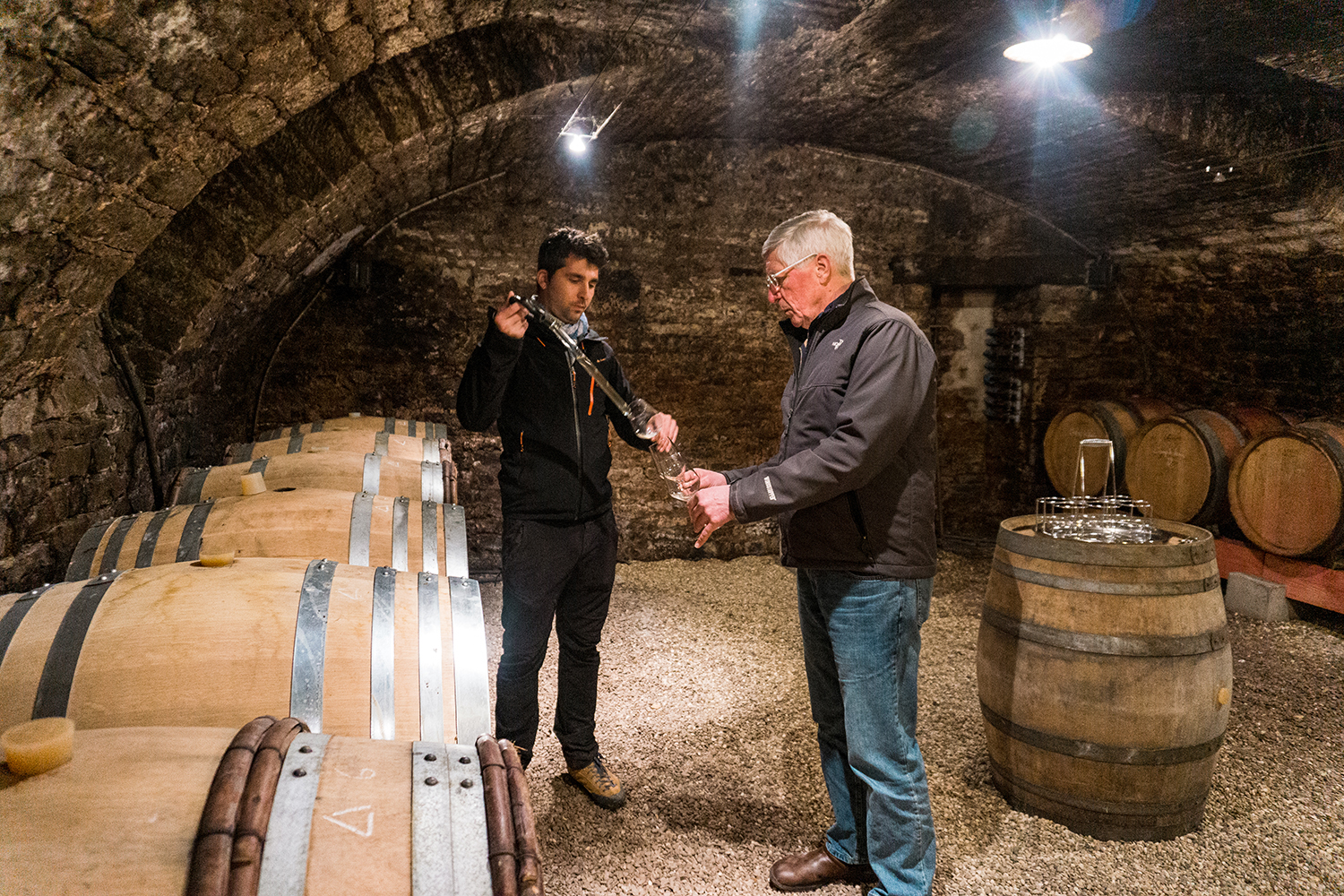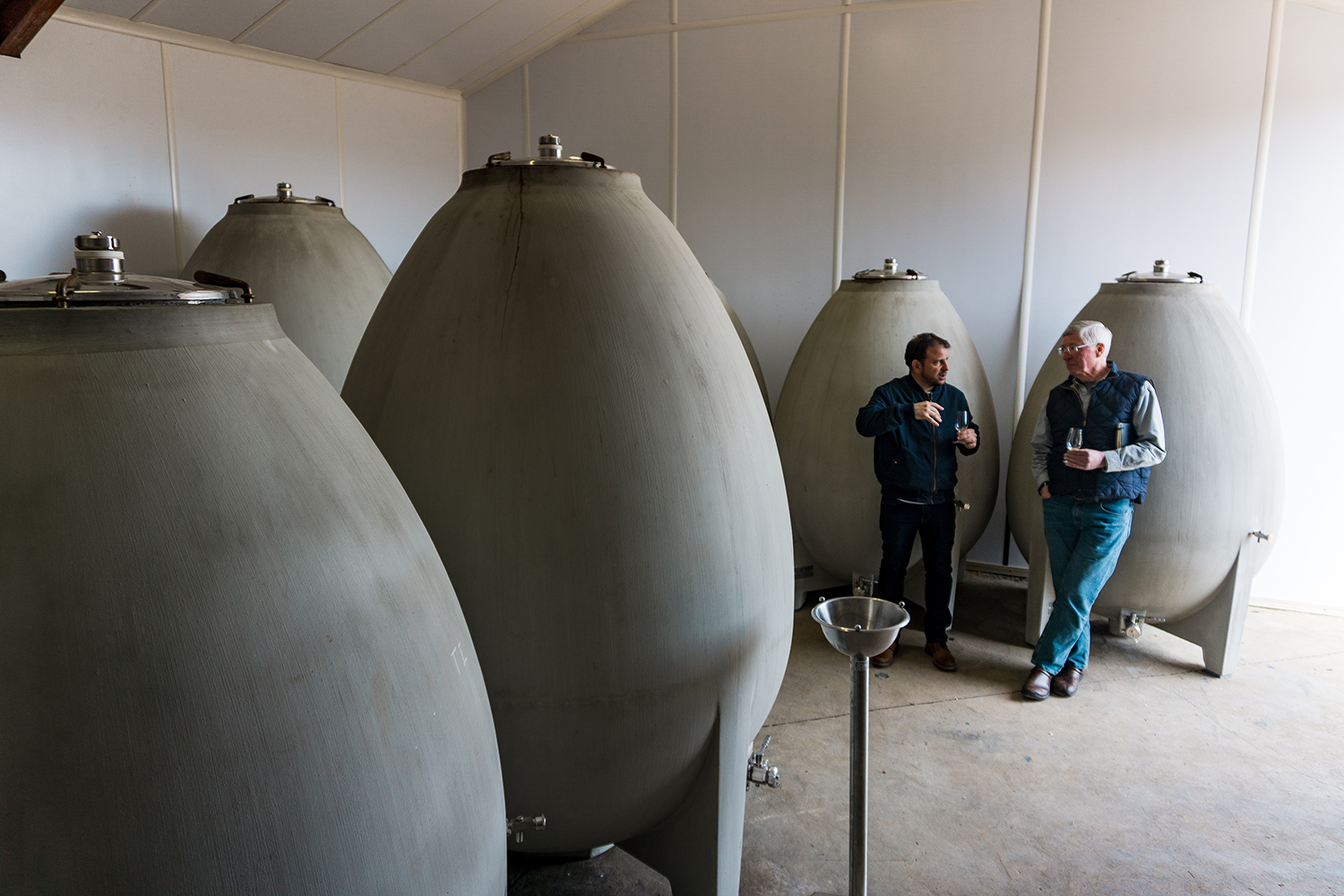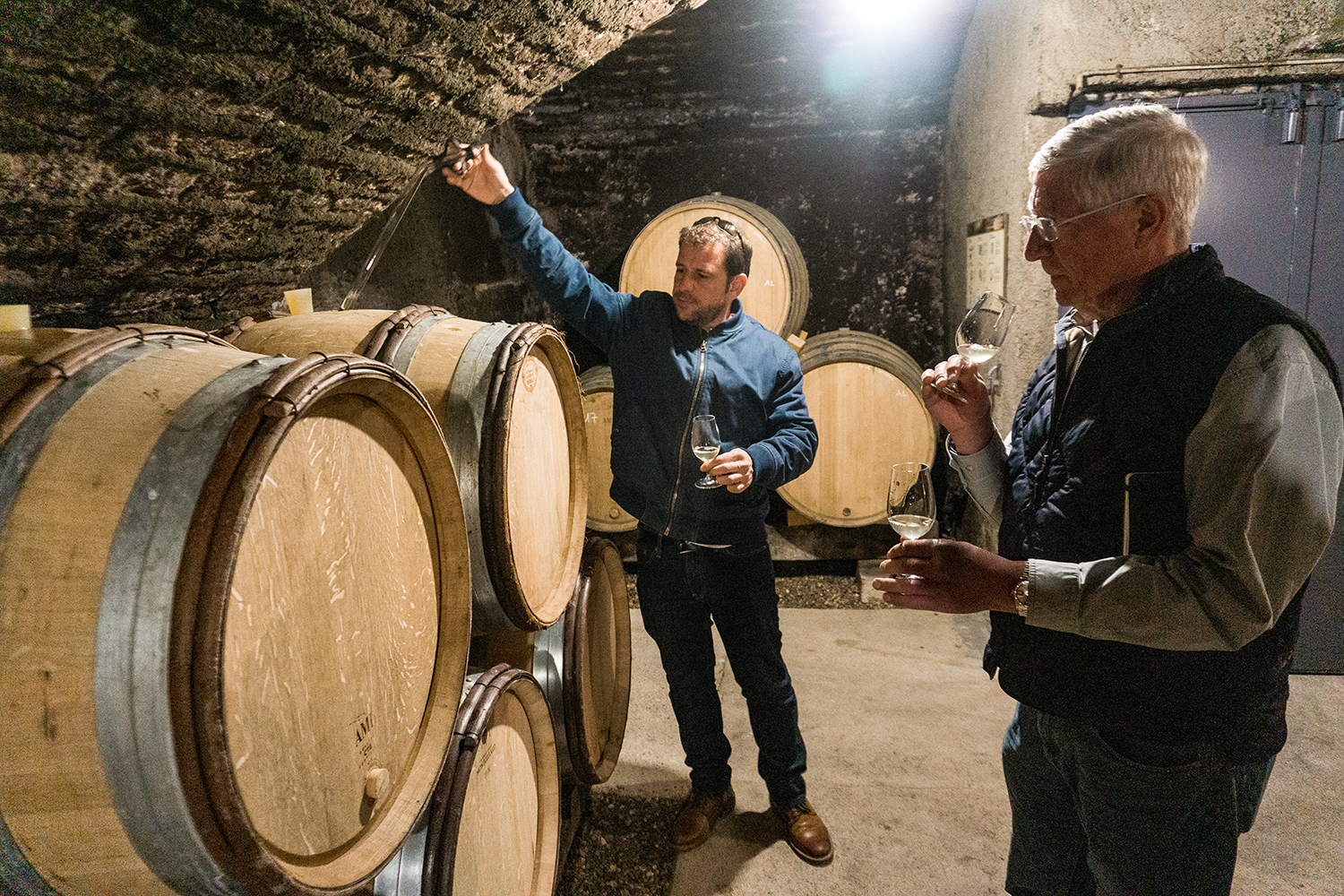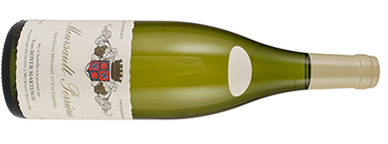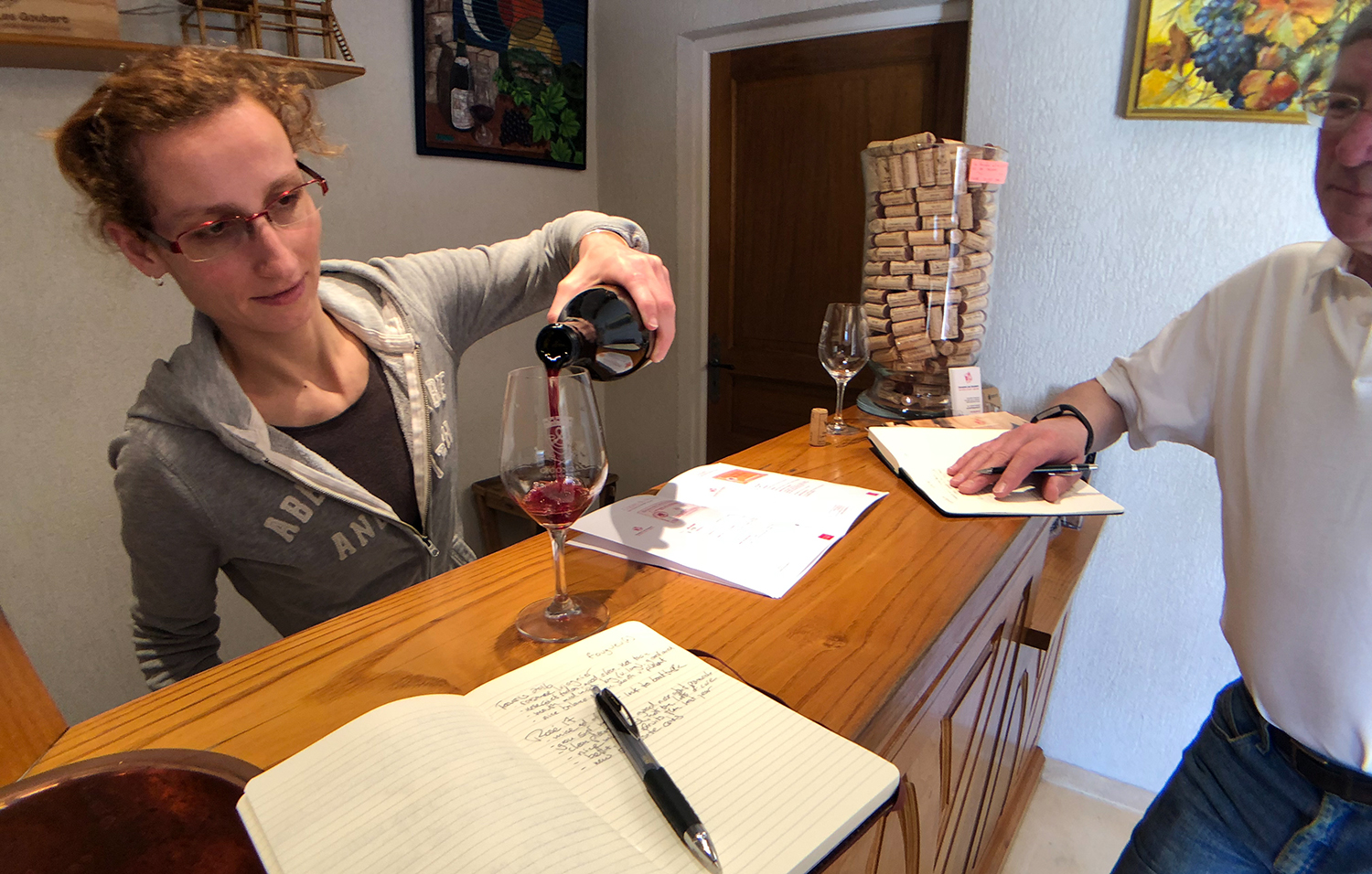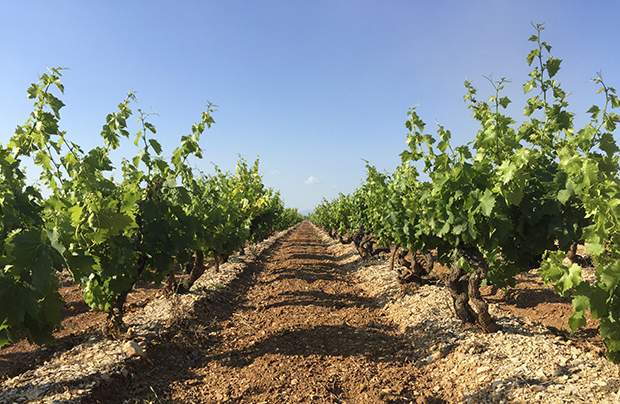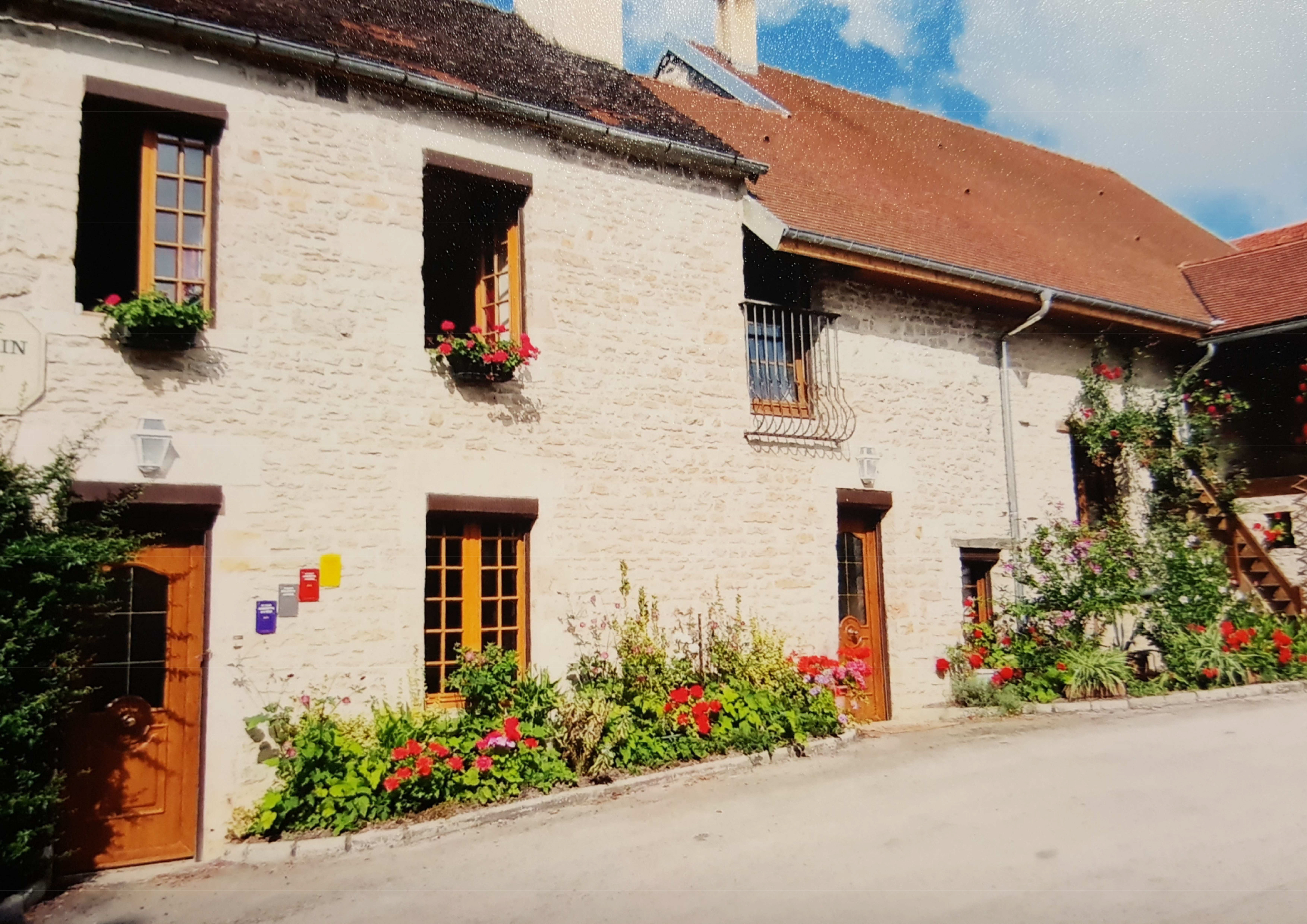It’s never hard to say good things about the wines from the Domaine Michel Gros. Year after year they are best in class, as Michel employs the experience of more than forty vintages to coax the best each year from the world’s best terroir for Pinot Noir. Over the course of entertaining this summer, we sampled a wide range of Gros wines and vintages: simpler regional wines, village wines going back to 2005, and premier and grand crus from even earlier. Uniformly, the Gros wines showed complexity and interest that put them at the top of the range in every category. True, some are expensive, but if you’re looking for the best that Burgundy has to offer, this is a good place to go.
The Gros 2017s are excellent. Unlike many of the recent vintages, the 2017 growing season was an easy one, largely without damaging frosts, hail, or vineyard maladies, and the grapes arrived at maturity in excellent health. Wilcox père can certify that the picking went smoothly, without much interruption from showers and without much damaged fruit to be sorted out in the vineyards. (This relative cakewalk contrasts with the rainy and tricky harvest of 2013, when Wilcox fils made Ansonia’s first foray into les vendanges.) We expect the 2017 vintage to be approachable from the start, with the wines becoming open and accessible more quickly than in the average vintage. With Gros’s wines, of course, the issue is only one of timing. Those 2013s from Tom’s harvest wore their structure on their sleeves in the early years, but by now they have softened and integrated and show their terroir clearly and beautifully, becoming a true wine lover’s vintage.

We’ll begin with Michel’s only white wine, the 2017 Bourgogne Hautes Côtes de Nuits “Fontaine St. Martin” blanc. This lovely wine, from the same soils as the Hill of Corton, easily competes with more celebrated white Burgundies. The Chardonnay grapes are crushed and destemmed, then soaked overnight before the pressing and the beginning of a slow, cool fermentation, followed by an élevage in the same oak barrels as the reds. Allen Meadows (“Burghound”) found a “mildly toasty nose” and was impressed by its “round succulent, and slightly stony flavors,” its “unusually good volume,” and its “balanced and long” finish. This is delicious white Burgundy at a better price than most of its peers.
At the regional level, there are now four choices in red — Bourgogne from the Côte d’Or (featured in last Sunday’s post), Bourgogne Hautes Côtes de Nuits, Bourgogne Hautes Côtes de Nuits “Au Vallon,” and Bourgogne Hautes Côtes de Nuits “Fontaine St. Martin.” The Bourgogne Côte d’Or offers far more complexity than most reds at the Bourgogne level. There are silky tannins, notes of raspberry and plum, and an earthy, complex palate. Burghound found a “fresh and distinctly earthy nose,” and called the wine “supple, round and delicious.” The three wines from the Hautes Côtes will all have a bit more structure and potential for ageing than the Bourgogne. Burghound found the Hautes Côtes regular cuvée “nicely energetic,” with a “slightly finer” mouthfeel than the Bourgogne. Its fruits are a bit darker, and it will offer its best drinking a bit later than the Bourgogne. “Au Vallon” faces the south and so makes riper wine that will show roundness earlier than the regular Hautes Côtes cuvée; over the course of its life it will probably offer a bit more richness as well. Look for red cherry fruit with a low-tannin, cool earthiness. The “Fontaine St. Martin” rouge comes from those Hill-of-Corton soils that offer the promise of impressive mineral complexity. It is likely to peak later than the other regional wines from Gros, so if you like to hold your wine and watch it develop over time, this is your choice.

We have four Gros wines to offer at the village level: Nuits St. Georges, Morey St. Denis, Chambolle-Musigny and Vosne-Romanée. The latter two villages are among the most sought-after in Burgundy, and so the prices are noticeably higher than for the first two. But all four are delicious wines that you will be proud to serve to any wine-loving guests at any important dinner. (In fact, just last week we paired Michel’s Chambolle 09 with his Vosne 05 at a family Sunday dinner. We have pulled the corks on many fine bottles of wine in recent months, but this may have been the most impressive pairing of the year. Both wines were absolutely gorgeous and stunningly complex, with plenty of life ahead.)
Gros’s Nuits St. Georges “Les Chaliots” is from a single village vineyard in the heart of the appellation. Like most Nuits, it is more a wine of power more than finesse, with a toasty nose, beautiful dark fruit and a beef stock base. It’s an excellent match for any hearty dish, say a Daube Provençale or a pot roast; it also goes wonderfully well with strip steaks on the grill. This is not to say that the wine lacks subtlety — Burghound was impressed by its “vibrant medium-bodied flavors” and its “complex and lingering finish.” The 2017 Morey St. Denis “En la Rue de Vergy” is more precise and elegant, with a bit less weight than the Nuits. The Morey is usually the first of Gros’s village wines to drink really well, and we thought that this vintage had a particularly silky mouthfeel. Combined with the ripe and toasty nose, it should be showing well before long at all.

While Vosne-Romanée is uniformly hailed as “the greatest pinot noir village on earth,” its tiny neighbor Chambolle-Musigny is not far behind. Michel Gros’s Chambolle is at the village level, but more than half of his Chambolle vines are in a plot that abuts the great Grand Cru “Musigny.” This is an important difference, and we have always thought that tasted blind most professionals would guess the wine to be premier cru. The intensity, depth, and complexity are all a cut above. Like a premier cru, the wine needs more time to reach its peak, but it amply rewards keeping. The Vosne-Romanée is particularly lovely in 2017. Burghound found the nose “attractively ripe and exuberantly fresh,” with notes of red cherry, plum, dark raspberry and a variety of spice nuances. The mouthfeel is elegant and the long finish is particularly impressive. Burghound called it “very Vosne” and predicted that it would “drink well young or with age.”

Of course, Michel’s Vosne premier crus offer a level of complexity, length and elegance that exceeds his superb village level wines. The Vosne-Romanée 1er cru “Aux Brûlées” lies on rocky soils right next to the Grand Cru Richebourg. It is always a big wine that needs time to show its character. Burghound noted that “wood frames the spicy aromas that are composed mostly by notes of cassis, violet and anise.” He found the flavors to “brim with minerality” and praised the “long and well-balanced finale.” He also noted: “some patience will be required.” Neal Martin of Vinous awarded 90-92 points, calling it “one of Gros’s better wines in 2017.”
The 2017 Vosne-Romanée Clos des Réas (the family’s flagship vineyard and the only 1er cru monopole in the appellation) is not likely to require quite as much time. As Jasper Morris MW has written, Réas is “supremely elegant” wine, that while approachable young “ages remarkably well.” When we tasted the wine a few months before bottling, it was rich and round, really quite beautiful. Your Clos des Réas will always be among the best bottles in your cellar, a great choice for those who like to stock bottles for special meals.
The Clos de Vougeot is the largest Grand Cru in the Côte de Nuits, with more than 80 owners. Its walls date to the 1300s, and unlike most Grand Cru vineyards, there is a wide variation in the quality of the terroir. The very best locations are at the top of vineyard, and Michel Gros’s vines are there, in the area called the Grand Maupertuis. When Michel takes people to see his vines in the Clos Vougeot, he tells them “I am the smallest landholder in this vineyard.” Apparently his father presented Michel with a few rows for his twelfth birthday. Michel had been hoping for a bicycle, and so was disappointed, but we should all be glad for the disappointment. Not only is the location as good as it gets, but his vines there are at their peak now. The only thing wrong with this wine is that there is so little of it — two barrels, or three in a generous year. For this wine, we’ll accept lots as small as 3 bottles. First come, first served.
MICHEL GROS
(case prices)
HCDN “Fontaine-St-Martin” blanc 2017: $385
Bourgogne Côte d’Or 2017: $295
Hautes-Côtes de Nuits 2017: $350
HCDN “Au Vallon” 2017: $365
HCDN “Fontaine-St-Martin” rouge 2017: $395
Nuits-St-Georges “Chaliots” 2017: $695
Morey-St-Denis 2017: $695
Vosne-Romanée: $875
Chambolle-Musigny: $875
Vosne-Romanée 1er cru “Aux Brûlées” 2017: $1,395
Vosne-Romanée 1er cru “Clos des Réas” 2017: $1,595
Clos de Vougeot Grand Cru 2017: $1,995







